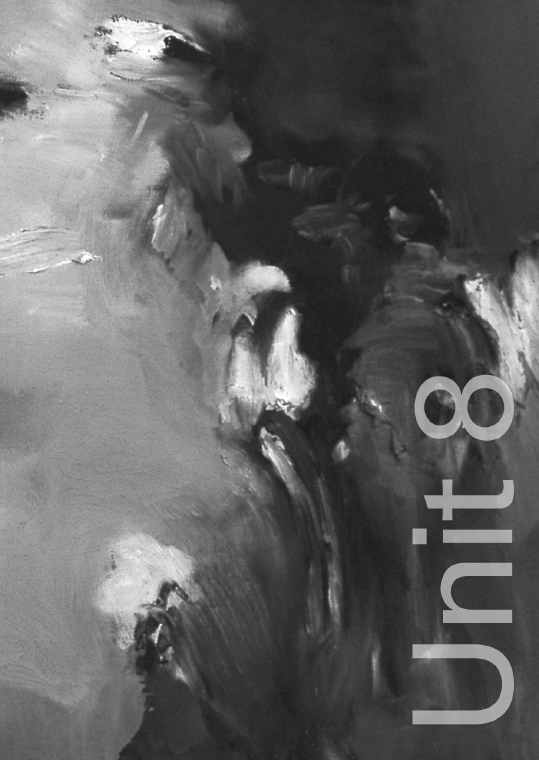 |
Home |
UNIT 8A OBJECTS AND VIEWPOINTS
ABOUT THE UNIT
In this unit, pupils explore familiar objects from different viewpoints as the starting point for their work. They develop their ideas by selecting and abstracting qualities of objects to use as the basis for a painting. They learn about the ideas and approaches of the Cubists and their influences and make connections with other artists who worked from still life.
These use figurative work as a starting point
UNIT 8B ANIMATING ART
ABOUT THE UNIT
In this unit pupils explore the use of the moving image to communicate ideas about particular genres and styles of art. They analyse paintings, films, cartoons, illustrations, digital images, photographs and images from contemporary visual culture. They learn how to represent ideas and values using the moving image. They make connections between Abstract Expressionism, Expressionism and Pop Art of the 1960’s and contemporary moving images.
The New Art Gallery can provide lively images that imply movement. They can be used as a starting point for either discussion about movement or to inspire pupils to produce an animated version of images using digital technology.
The Damien Hirst Spin picture in the Discovery Gallery is a picture made with actual movement which is very much part of the final result. The alien and beast images in the Discovery Gallery would also lend themselves as characters in a simple animation project.
Many local groups offer support in setting up animation projects including Creation Digital at Wolverhampton Museum and Art Gallery and the Lighthouse community and education project also in Wolverhampton (01902 716055).
UNIT 8C SHARED VIEW
ABOUT THE UNIT
In this unit pupils explore and use natural and other materials to construct a temporary, site-specific work, which represents a shared view of their locality. They work in groups to make a collective response. They analyse examples of work from different times and cultures where ideas, beliefs and values are shared and communicated through art, craft and design.
%20-%20Eagle%20(Whalebone)%20(a)_small2.jpg)
%20-%20Eagle%20(Whalebone)%20(b)_small2.jpg) |
Queen Charlotte Islands – Haida people ‘Eagle’ (whalebone) GR322 (MAIN HALL). This carving has a strong image and could be used as a starting point for study of the Haida people who construct totem poles carved in bone or wood along the coastal shoreline. Totemic figures based on their mythology and religious beliefs (books available in gallery library) located in between pine trees in their landscape. Pupils could design and construct their own totem poles from cardboard for the school grounds or environment (representing a shared view of their locality?) Further study of tribal art could be studied via websites on First Nation peoples of Canada.
|
 |
Jacob Epstein ‘Maquette for Cavendish Square Madonna and Child’ (lead) GR91
(RELIGIOUS ART) This piece could be used to introduce the idea of a maquette, the sculptor’s small preliminary model, used for planning how the finished piece will look. It also is a starting point for study of site-specific public art with further examples in the gallery that include the English ‘Nottingham’ ‘Resurrection’ GR349 (FIGURE STUDIES) and the Indian ‘Goddess Parvati and attendants’ GR323 (FIGURE STUDIES). In many cases a story is told through a series of visual images (like a stained glass window). Pupils may produce site-specific views of their locality designed for windows within school, perhaps sited along a corridor.
|
%20-%20Mughal%20period%20ca%201526-1761_small1.jpg) |
Indian ‘Covered Box’ (rock crystal) GR327 (FLOWERS AND STILL LIFE) This small treasure is a tribute to skilled craftsmanship – that a lump of rock crystal was carved into this delicate little box seems amazing to us living in a technological age. Transforming naturally occurring materials into an artwork that reflects something of where the piece come from using leaves, twigs, stones (as produced by Andy Goldsworthy) or clay (from Brownhills), rangoli patterns using natural materials (often displayed temporarily in the art gallery). I like the idea of making a ‘Rock Drill’ figure based on the Epstein drawing (GR72) (FIGURE STUDIES) out of twigs or withies standing very tall in the school grounds like a Walsall Wicker Man!
|
The stripe design outside the gallery in the Gallery Square is designed by Richard Wentworth - study aerial photographs of this (or drawn studies/photos taken from sculpture terrace on the roof). A design project produced on maquettes could develop your own design to be drawn on a large tarmac area (playground) using chalk and photographed/viewed from appropriate high window in school overlooking the drawing.
An advantage of these temporary site-specific artworks, (made of leaves, chalk etc.) to an art teacher, is that they can be recorded by video and photographs and then be eroded/ disappear. This negates the need for storage which is often a problem with 3D and large scale work.
|
Home |
A resource web for art teachers using the Garman Ryan Collection and the New Art Gallery Walsall, England as a source of inspiration for the delivery of the QCA National Curriculum 2000 art schemes of work to pupils in Key Stages 1-3 |